Innovation is born from delusion and curiosity! The story of the invention of air-conditioned clothing that saves human health and the global environment
In recent years, when the number of extremely hot days and midsummer days is on the rise, we often see clothing with fans. It is an epoch-making product that plays a role in preventing heatstroke and global warming. When it was commercialized in 2004, it gradually spread by word of mouth among construction site workers, and is now attracting attention as a sportswear and fashion item. However, behind its success, there was a 20-year “era of shyness”. Koji Ichigaya (75 years old, chairman of Air Conditioning Clothing Co., Ltd.), the creator of Air Conditioning Clothing, reveals the story of his invention.
"Physiological cooler" in humans
When the human brain senses "hot" through the temperature sensor of the skin, it sends a command to produce the required amount of sweat from the sweat glands, and the evaporation heat of the sweat lowers the body temperature (physiological cooler). “Air-conditioned clothing” is an item that maximizes the cooling effect. Air taken in from two small fans attached to the back flows between the body and clothes, instantly evaporating sweat.
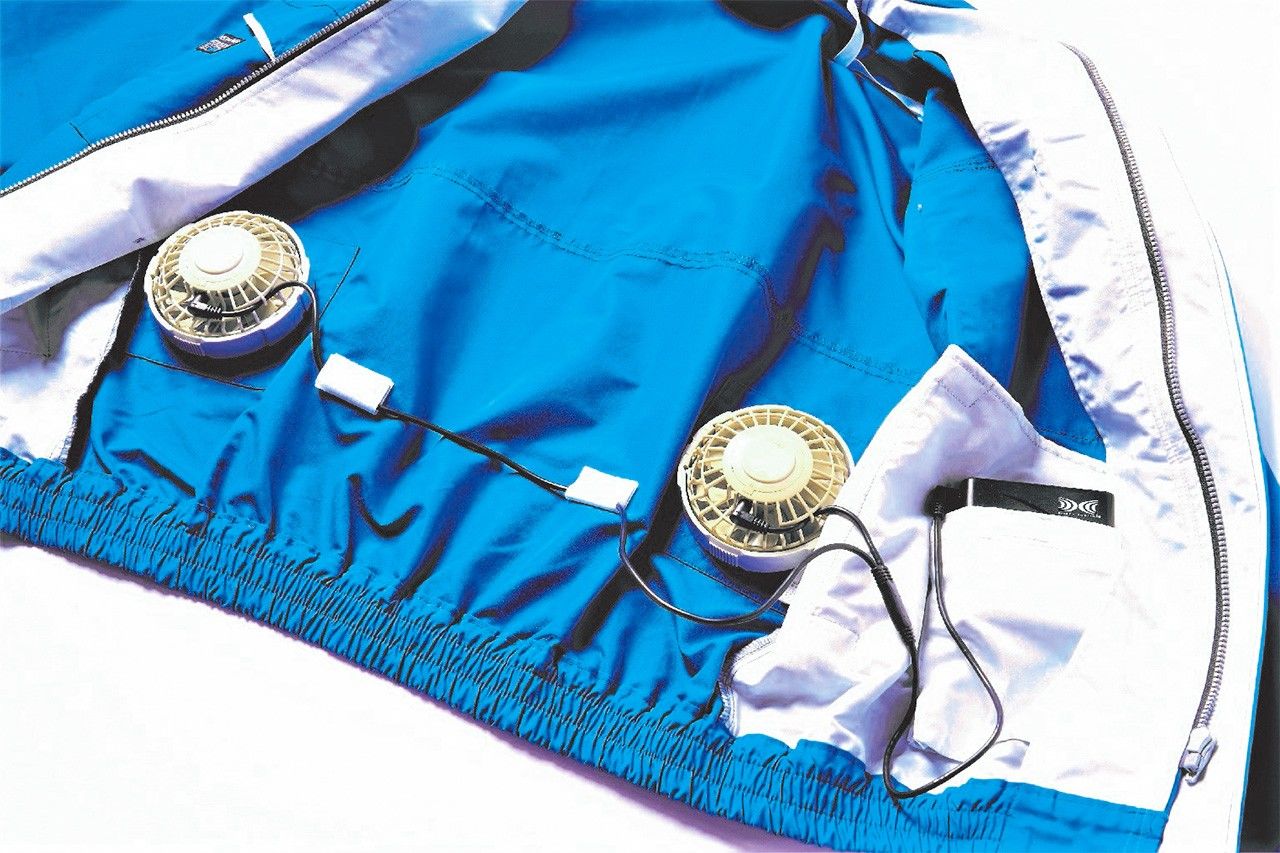
Internal structure of air-conditioned clothes. A cable runs all the way from the fan to the battery. The battery can be stored in the internal pocket as well as the outer waist pocket.
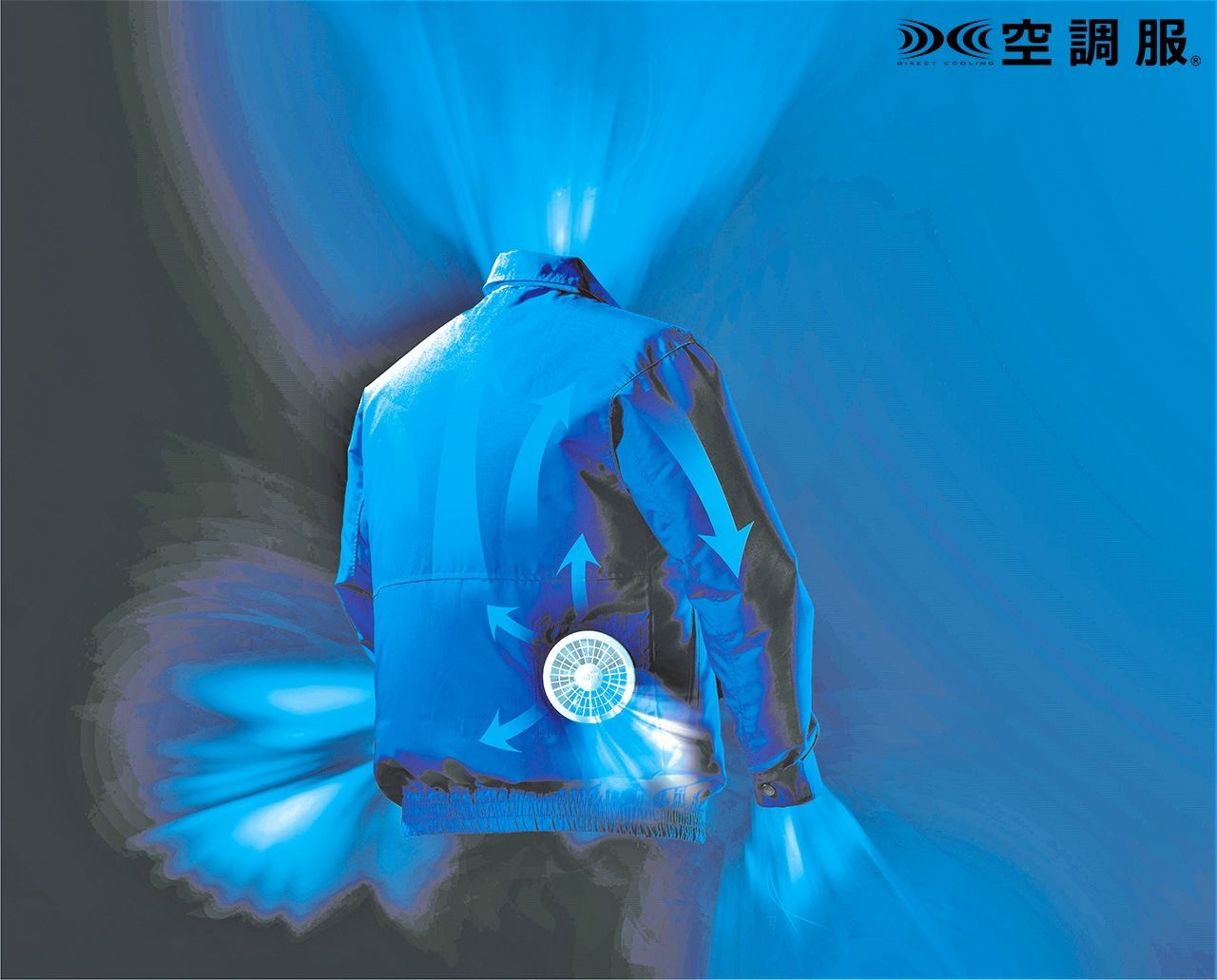
The internal structure of "air-conditioned clothes". Connect from the fan to the battery with a cable. The battery can be stored in the internal pocket as well as the outer waist pocket.

The outside air taken in by the fan is exhausted from the collar and cuffs while evaporating sweat. The hem part is designed to prevent air from leaking so that the wind can flow to the parts that are prone to sweating.

The outside air taken in by the fan is exhausted from the collar and cuffs while evaporating sweat. The hem part is designed to prevent air from leaking so that the wind can flow to the parts that are prone to sweating.
Thermography showing the wearing effect. Since sweat evaporates quickly, sweat odor is reduced and it is effective in preventing skin diseases such as heat rash.
Thermography showing the cooling effect of wearing air-conditioned clothing. Since sweat evaporates quickly, the smell of sweat is reduced and it is effective in preventing skin diseases such as heat rash (there are individual differences).
A seemingly eccentric idea can be a “Columbus egg” if you know how it works. However, there were many difficulties and twists and turns before air-conditioned clothes were commercialized and recognized by the public.
The trigger dates back to around 1994, about 30 years ago.
“At that time, I was making equipment to measure the image quality of CRTs for TV factories, and I was traveling around Southeast Asia on business. Thailand and Malaysia were in a rush to build huge buildings, and I suddenly had an idea. The amount of electricity consumed by air conditioners to cool such a building must be amazing.Isn't it possible to invent a cooling device that does not produce greenhouse gases?"
At that time, Mr. Ichigaya was 47 years old. Three years have passed since she left Sony early and launched a venture company. His business was doing well, but he was worried about his future.
“The evolution of liquid crystal technology is faster than expected, and CRT TVs are destined to be annihilated. Then I thought."
The technology that has been accumulated so far is completely useless. Moreover, I am a novice when it comes to cooling systems. But I loved doing things that other people wouldn't do.
He doesn't care whether he has knowledge or not, he gives shape to his thoughts, "I wish it was like this," without being bound by common sense. To that end, he formulates hypotheses and tests them one by one—that was Mr. Ichigaya's policy as an engineer and an inventor.
Received tutoring from "Inventor" Masaru Ibuka
"People can't do what they can, but they can do what they can't"
These are the words that Mr. Ichigaya wrote in the strengths and weaknesses section of the interview sheet during the Sony entrance exam. In fact, in the written test of the mark sheet method, I made a big mistake by shifting the answer column one step. However, when the interviewer poked him into it, he went on to explain, ``Why does the left and right reverse when I look in the mirror?'' and passed the exam.
“I have been curious since I was a child, and I love to experiment. Caramel boxes get lighter when there is less caramel, but why does dry cell batteries keep getting lighter? was"
When he reached the upper grades of elementary school, he went to Akihabara Electric Town and made his own microscopes and telescopes. A simple telescope is made by rolling up cardboard into a cylinder and inserting a lens into it. However, he had the originality of using only one objective lens and substituting his own "naked eye" ability for the eyepiece.
After graduating from Waseda University's Faculty of Science and Engineering, he joined Sony after seeing a Trinitron color TV image in the Sony Building in Ginza. There, he met a rare genius inventor, Masaru Ibuka, and received training.
The best memory was when Chairman Ibuka gave me a high award for the flute that uses the light from a cathode ray tube as a sound source, which I submitted to the company's invention contest. Mr. Ichigaya was transferred from factory work to the development department at the head office, where he was involved in the development of new electronic musical instruments. As a result, it was not possible to commercialize it, but the encouragement from Chairman Ibuka supported Mr. Ichigaya, the "inventor" even after starting the business.
The ultimate cooling device that does not require energy!
After much thought, Mr. Ichigaya came up with the key words for realizing a "mechanism for keeping cool while saving power."
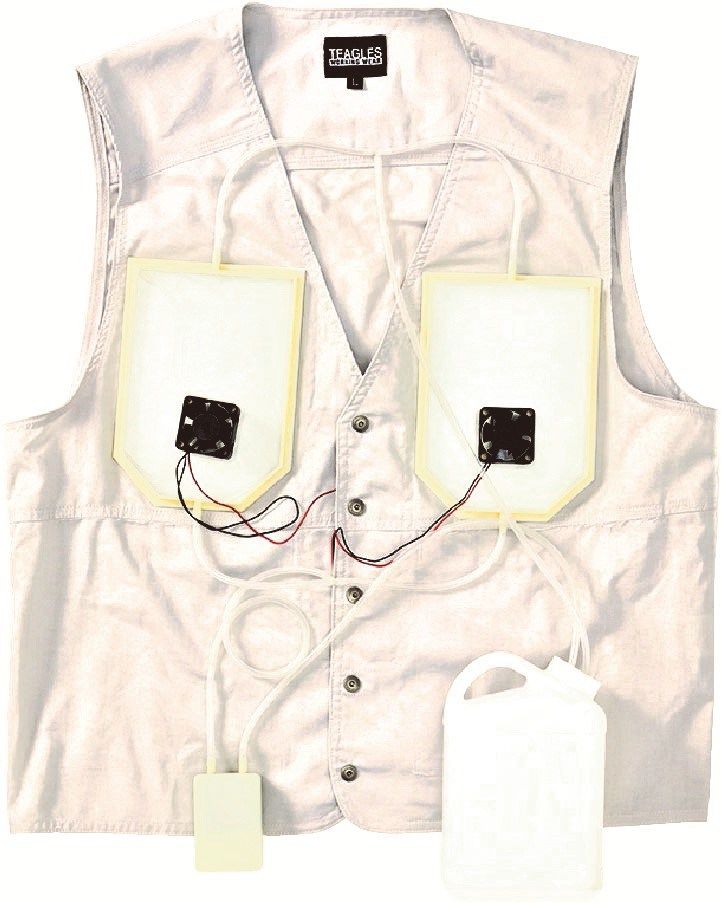
That is "use of water". Inspired by the traditional Japanese wisdom of sprinkling water on the ground to cool off.
If you think about it, most of the cooling systems in the world, from air conditioners to fans, fans, refrigerators, and even nuclear reactors, use the heat of vaporization. The difference is what is being vaporized as a refrigerant. Fans and fans are made of perspiration, air conditioners and refrigerators are made of compounds made for refrigerants such as CFC substitutes, and nuclear reactors are made of water from rivers and seas.
The energy used to produce the heat of vaporization is closely linked to global warming. With the spread of air conditioners, the heat island phenomenon has progressed in urban areas.
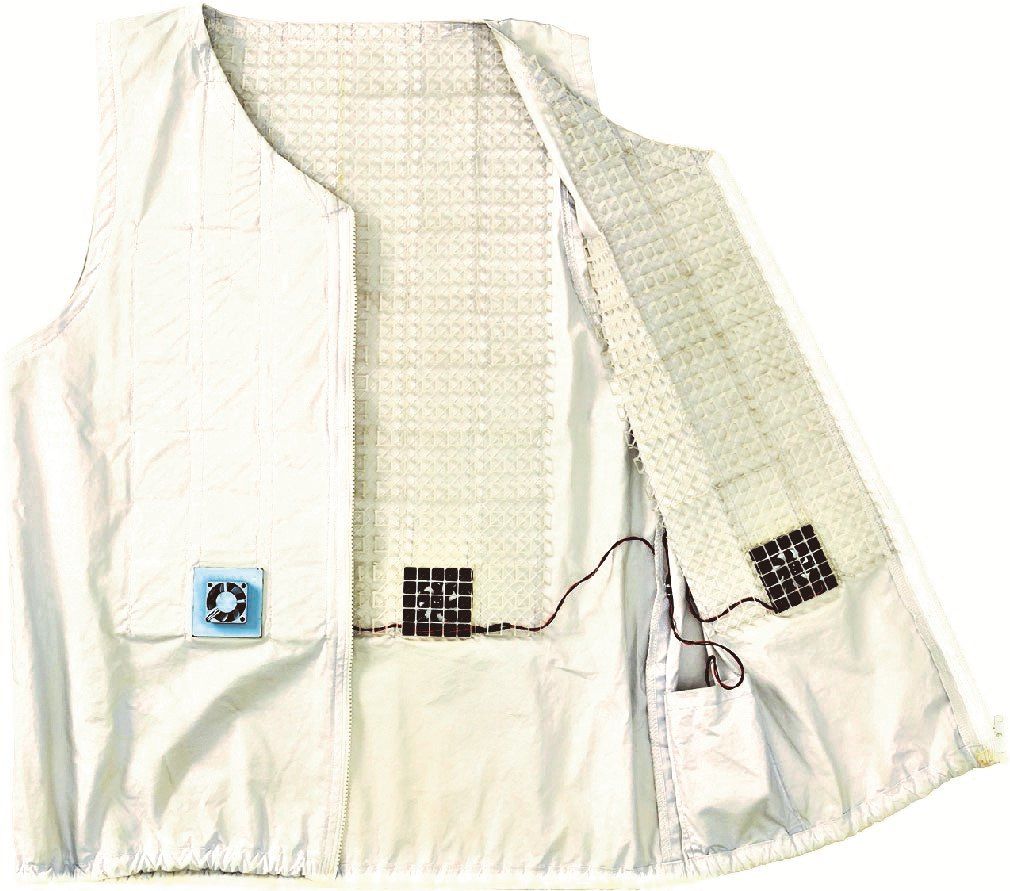
Water evaporates harmlessly, and it costs nothing. The effect may be insignificant compared to air conditioners, but there is no doubt that water is the ideal refrigerant.
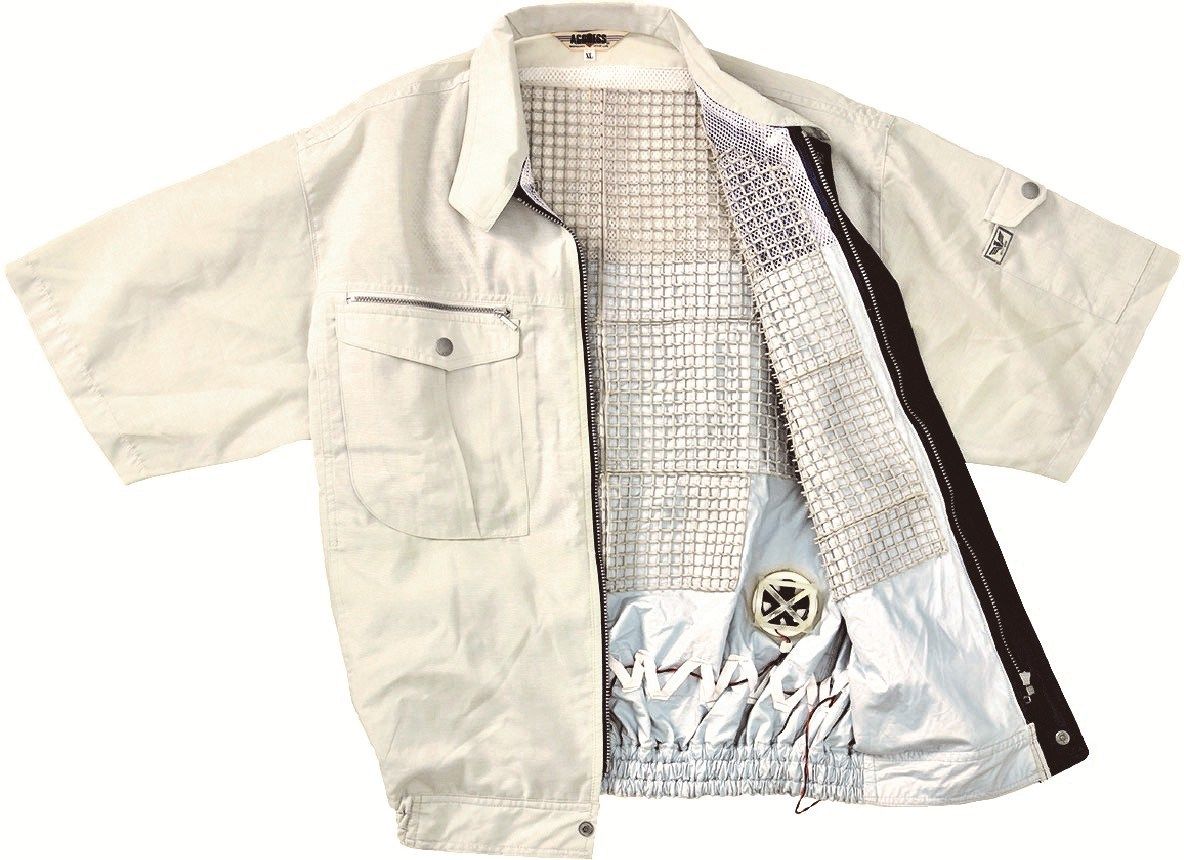
Therefore, I came up with the idea of a "water-cooled cooler" that uses the heat of vaporization of water to cool the room, and first created a doghouse to test it in a small space. Then again he noticed. "There is no need to cool the whole room. All you have to do is cool the person."
It was the germination of the concept of “cool clothes when worn”—“air-conditioned clothes” that are attached to the body to cool only the person.

Wearing clothes with a tank and experimenting on the train
Prototype clothes with a "water-cooled cooler" installed. The water in the tank is sucked up by a pump and pipes, sprayed on the clothes, the heat of vaporization of the water is taken away, and the heat is blown away by the wind of the fan. Mr. Ichigaya got on the train wearing a prototype with a sign that said, "Experiment in progress."
The first air-conditioned clothing (1999 model). Supply water to her chest filter and blow air with a fan
The first "air-conditioned clothes" (1999 model). Supplies water to the chest filter and blows air with a fan
"People around me looked at me with curiosity, saying something strange was coming. On top of that, a high school girl happened to see the spectacle, and she begged me to stop because it was embarrassing..."
The tank is heavy and leaks. In addition, it was found that when the temperature is low, it is cooler than necessary, and conversely, when it is hot, it is not so effective. It was a complete failure.
However, as I was contemplating whether I could somehow fix the leak, I had another epiphany.
"Even if we don't use water, we humans have the function of sprinkling water. When it's hot, people naturally sweat. If the sweat can be evaporated by a fan, it should be possible to keep the body at an appropriate temperature."
2001 model. Changed to a system that uses 4 commercially available small fans to exhaust the hot air inside the clothes.
2001 model. Changed the mechanism to exhaust the hot air inside the clothes using 4 commercially available small fans.
2002 model. Attach spacers to the lining to reduce sticking
2002 model. A spacer is attached to the lining to reduce sticking and improve airflow.
Encouragement from supportive patrons
In 2004, six years after starting research, sales of "air-conditioning clothing" began with a limit of 7,000 pieces.
When I sent a press release to each media, it became a hot topic because it was unusual clothes, and it was picked up by TV news and wide shows. However, when the wave of coverage subsided, sales slumped, and the low-altitude flight continued at 10,000 a year.
“At any rate, it is an unprecedented product, so there is nothing for consumers to compare against.
"The proof is in the theory, once you try it on, you will definitely know how comfortable it is..."
Mr. Ichigaya was frustrated, but the problem of "appearance" was bigger than I thought. The 2004 model was the first model to be sold. In addition to increasing the size of the fan, the idea of exhausting hot air inside the clothes has been reversed, and it is designed to work on the outside air.
2004 model. Ichigaya's son Toru (current president of Air Conditioning Clothing) advised me to increase the size of the fan. In addition, the idea of exhausting the hot air inside the clothes has been reversed, and the specifications have been changed to work on the outside air.
On the other hand, the company's business is declining day by day.
The cathode-ray tube measuring device is a high-value-added product that costs 5 million yen per unit. Selling 3 to 5 units a month was enough. However, this is not the case with “air-conditioned clothes” that cost about 10,000 yen each. Mr. Ichigaya, who was in trouble with cash flow, threw out his personal property, but it was a waste of money. The bank refuses him additional loans. The two characters "bankruptcy" flickered in his mind.
However, what kept him from giving up was his absolute confidence that ``the only way to protect himself from heatstroke outdoors was in air-conditioned clothes,'' and the encouragement from his regular users.
Mr. Ichigaya has an unforgettable phone call.
One day, I received a complaint call at the company's call center.
"Are you trying to kill my husband!" At the opening, the woman hit the person in charge.
According to her, she has purchased three "air-conditioned clothes" so far, but each time she has had trouble with the fan stopping during work at the site.
At that time, there were many defective products, and the problem of cable disconnection was plagued.
After being contacted by her representative, Ichigaya called her husband and apologized. She herself experienced the pain of what would happen if the fan suddenly stopped while wearing it in the hot sun.
He then expressed his gratitude to Mr. Ichigaya and encouraged him.
"I'm a fan of 'air-conditioning clothes'! Until now, I've been to the hospital many times in the summer, but since I started using 'air-conditioning clothes', I haven't been to the hospital even once. I can't do a job like this, so don't give up and do your best."
The number of repeaters increased little by little. I began to receive phone calls and letters of encouragement.
"There are many people in the world who need 'air-conditioned clothing. We have to meet their expectations.'" Mr. Ichigaya and the director in charge of technology, Mr. Takeo Kurumizawa, continued to make improvements. rice field. It was exactly the work of sticking to 1 mm to "pierce the fine details".

2005 model. The first of the current model designs. Improved fan mounting
In 2011, it finally escaped from bankruptcy. Around this time, we succeeded in solving the battery problem, which had been an issue for some time. In place of conventional dry batteries, it is now possible to manufacture lithium-ion batteries at a factory in China, greatly increasing operating time and wind power. Such evaluations spread among workers at construction sites across the country through word of mouth and the Internet. Sales have doubled every year since 2012, reaching 1.2 million and 5.7 billion yen in 2019.
Recently, we have also developed products in collaboration with famous apparel manufacturers. In addition to those who work outdoors, it can be used for outdoor sports, camping, etc.
More and more people are using it. Before I knew it, many competing products were on the market, and the fan-equipped wear industry is now said to be worth 20 billion yen.
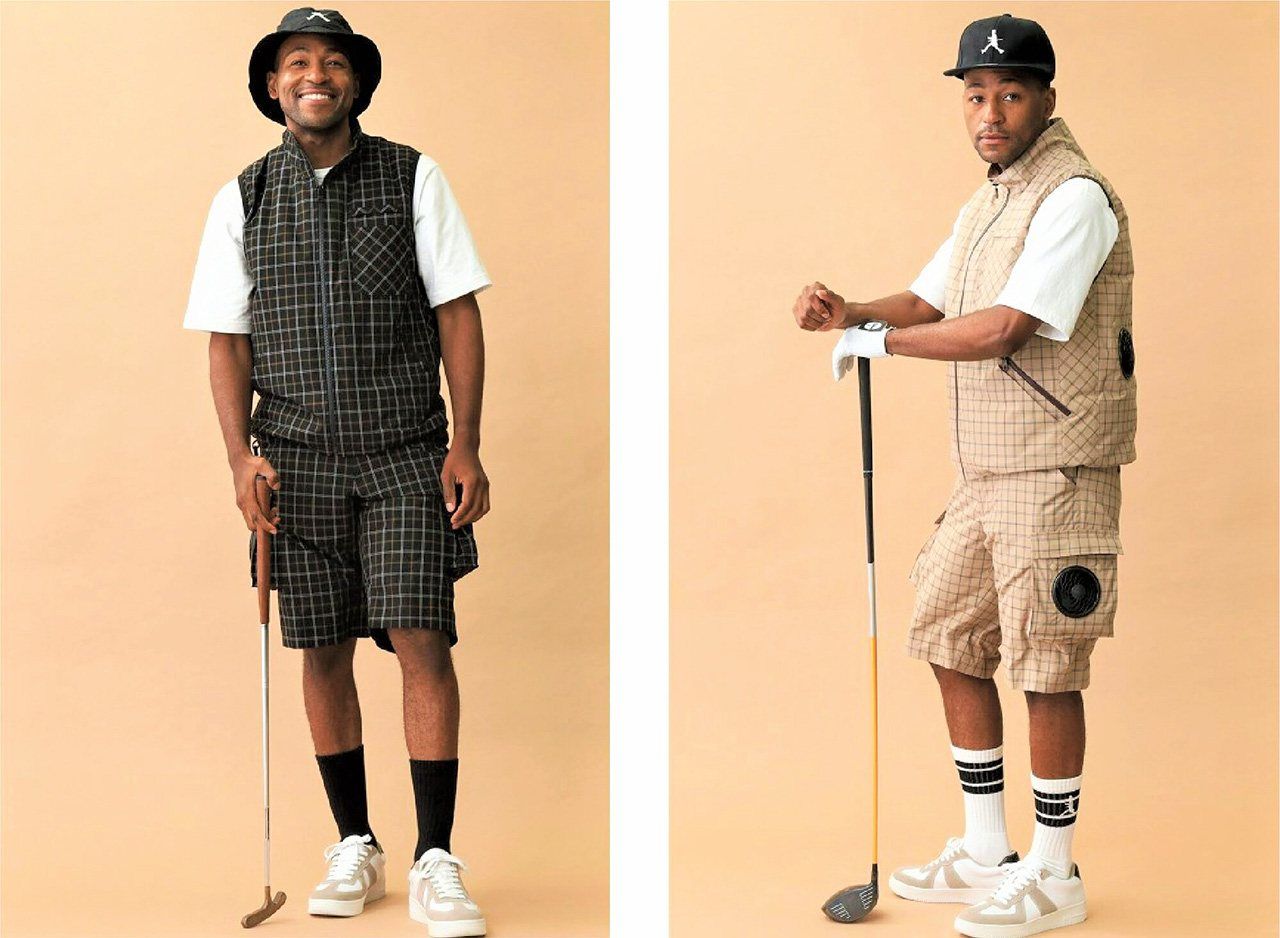
In August 2022, in collaboration with Takeokikuchi, we will release men's wear that matches summer sports and leisure such as golf.
In addition to clothes, we develop and sell strollers, backpacks, cushions, beds, etc. that use the principle of "physiological cooler".
In addition to clothing, they also develop and sell baby stroller seats, backpacks, cushions, bedding, etc. using the theory of "physiological coolers" Photo: Hisaki Amano
Innovation is born from a simple dream
Among the famous quotes of Masaru Ibuka, whom Ichigaya admires as an engineer, is the phrase, "Innovation is born from cherishing trivial dreams."
Listening to Mr. Ichigaya's secret story about his invention, it can be said that "air-conditioned clothing" is a cluster of such ideas. It is the product of more than 20 years of constant thought.
“Sometimes there are oversights in thinking. This is because humans have a kind of preconception that ``it should be so,'' and this has a great impact on the individual's thought process. It can also cause you to keep thinking wrong thoughts,” says Ichigaya.
In the case of "air-conditioned clothes", the former is the conviction that "water can be used as a refrigerant", and the latter is the belief that "water must be prepared". Looking back, Mr. Ichigaya says, "I made this oversight because I lacked a little objectivity. It was the flip side of my determination to commercialize it no matter what."
“But it is precisely because we overlook things and fail to notice simple things that people enjoy thinking.In order to catch a glimpse of unknown possibilities, humans must continue to think.Thinking is a luxury. It seems like something
In February 2021 under the corona, we developed an "air-conditioning face shield" that covers the entire face, assuming the use of essential workers. An electric fan for intake is attached to the top, and fresh air is fed inside through a filter compatible with the high-performance mask "N95" standard.
In February 2021 under the corona, we developed an "air-conditioning face shield" that covers the entire face, assuming the use of essential workers. An electric fan for intake is attached to the top, and fresh air is fed inside through a filter compatible with the high-performance mask "N95" standard.
According to Mr. Ichigaya, "air-conditioning clothing" is not yet in its final form, but is in the process of growth. He says he has more ideas than he can say here. Expansion into overseas markets is also an issue for the future.
“I would like to continue coming up with ideas, valuing my intuition. In the first place, if I had specialized knowledge of cooling devices and apparel, I would not have been able to come up with the idea of 'air-conditioned clothes.' I want to create a lot of products by valuing the perspective of "I wish I had something like this" and the curiosity of "Why is it like this?"
(Originally published in Japanese. Banner photo: Koji Ichigaya, who eventually invented and commercialized air-conditioned clothing through a “thought experiment” to solve global warming.) “At first, I fantasized about creating artificial clouds by floating a large reflector between the earth and the sun,” he laughs. Photo: Hisaki Amano
Image courtesy of: Air Conditioning Clothing Co., Ltd.






